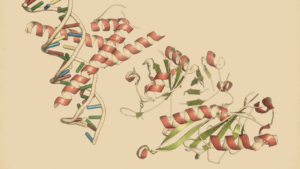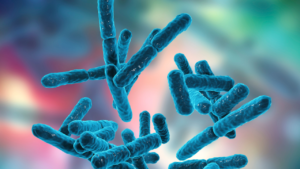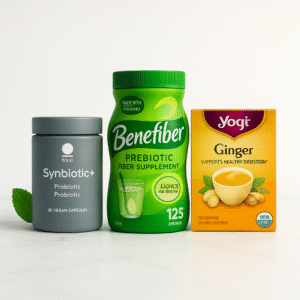Black Tea And Green Tea: 10 Amazing Facts Behind
Black tea and green tea are both derived from Camellia sinensis plant leaves, but they undergo different processing methods.
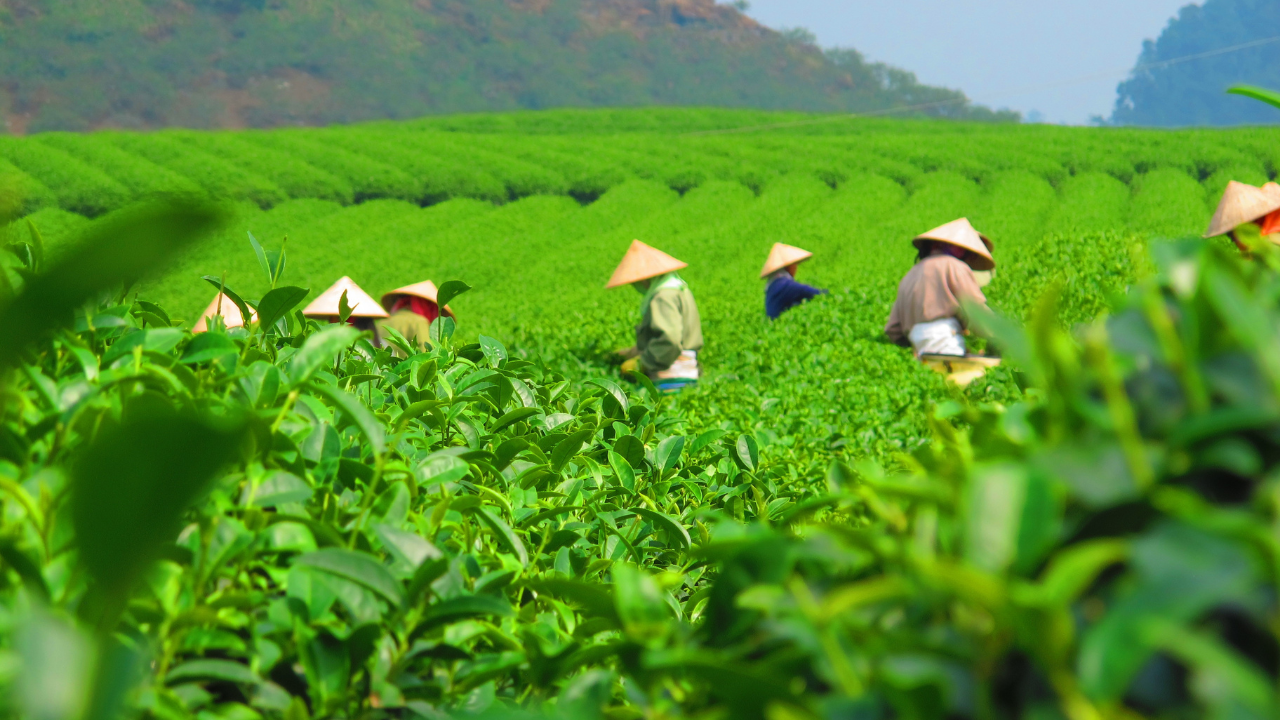
Black tea and green tea are both derived from the same plant, Camellia sinensis 

People all around the globe hold a great affection for tea.
Black tea and green tea extracts have antibacterial properties against various pathogens, including Gram-positive and Gram-negative bacteria 
Black tea is favored for its unique flavor, taste, and color, making it the most widely produced and consumed tea product 

Millions of cups of green tea are consumed worldwide every day, making it one of the most popular beverages.
Two main varieties of green tea are found globally, namely, the Japanese-style steamed green tea and the Chinese-style parched (fired) green tea, which differ in terms of blanching 
DRINK TEA AND BE HAPPY

Here are some differences between black tea and green tea based on the references provided:
1. Caffeine And Catechins Within Black Tea And Green Tea
Caffeine is an alkaloid that has a stimulating effect on the central nervous system and is also the other major component of tea leaves.
It is known that catechins form complexes with caffeine in black tea and coffee 
Green tea leaves typically have a significant amount of caffeine, with levels that can reach up to 10% (w/w) 
EGCG (epigallocatechin-3-gallate) is the most commonly found catechin and is the primary attribute of the biological properties of green tea such as its potent antioxidant effects 

Black tea has a higher level of caffeine than green tea, while green tea has a higher level of EGCG and total catechins than black tea 
Studies have shown that caffeine can improve alertness, memory, and cognitive function 
Additionally, caffeine has been found to have anti-inflammatory properties.
Furthermore, caffeine consumption has been associated with a lower risk of certain diseases, such as cardiovascular disease, diabetes, and Parkinson's disease 
EGCG has been demonstrated to have numerous health benefits, including anti-metastasis, anticancer, anti-inflammatory, and antioxidant properties, and can prevent cardiovascular disease 
Due to its potential in preventing cancer and promoting health, EGCG has emerged as a promising drug 
2. Medicinal Benefits
Both black tea and green tea have medicinal properties and noncancer health benefits 
Theaflavins (TF) and thearubigins (TR) are present in black tea and have been discovered to possess anti-inflammatory and antioxidant characteristics 
Green tea, on the other hand, contains a compound called epigallocatechin gallate (EGCG), which has been found to have antioxidant and anti-inflammatory properties.
Both black tea and green tea have also been found to have antimicrobial properties, which may help prevent infections. Additionally, both types of tea contain caffeine, which can improve alertness and cognitive function 
Imozai Organic Green Tea
Best Features:
- Certified organic and sustainably sourced
- Rich in antioxidants for overall health support
Reasons to Buy:
- High-quality green tea leaves for optimal benefits
- Promotes overall wellness with antioxidant properties
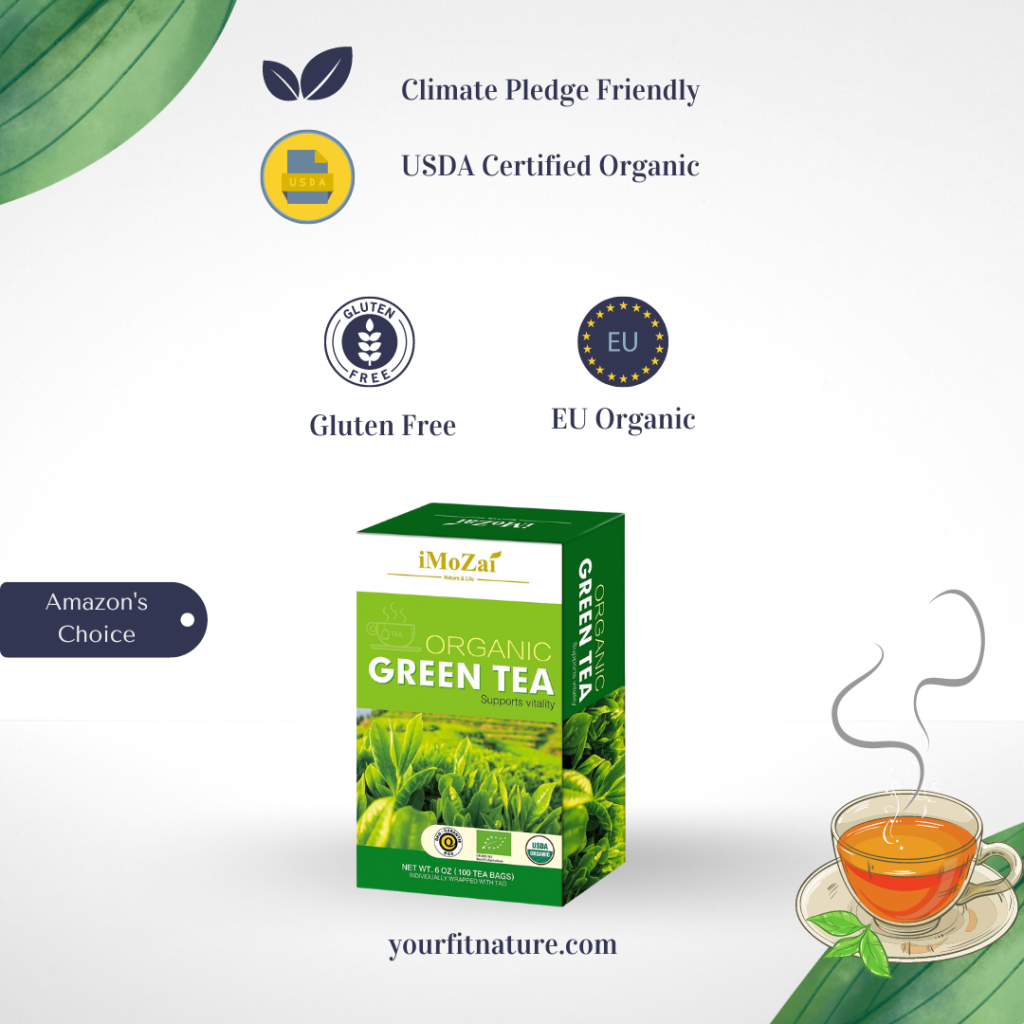
3. Chemical Composition
Compared to black tea, green tea contains higher levels (measured in g/kg DM) of total phenols (231 vs 151), total tannins (231 vs 151), condensed tannins (176 vs 101), and total saponins (276 vs 86.1) 
Compared to black tea, green tea has lower levels of neutral detergent fiber (254 compared to 323) and acid detergent fiber (254 compared to 323)
The amount and type of phenolic acids present in tea products are influenced by various factors such as processing methods, the type of tea plant cultivars used, and agricultural conditions 
4. Extraction Behavior
The number of catechins and alkaloids extracted from green and black tea depends on the solvent composition, extraction time, temperatures, and solvent pH 
Green tea can contain catechin levels varying between 12.3 and 136.3 mg/g 
The total catechin contents in tea samples can range from 10.96 to 95.67 mg/g 
During the manufacturing process of tea, the levels of catechins and alkaloids can be affected by the processing method, as some catechins may undergo oxidation or decomposition 
MAE (Microwave-Assisted Extraction) has a significant drawback in that it is sensitive to high temperatures, which can lead to a substantial decline in the bioactive components of tea 
5. Antioxidant Activity
Roasted tea has lower levels of total phenolics than green, oolong, or black tea 
Green tea is made from leaves that have been dried quickly and not fermented. This process deactivates polyphenol oxidase 
Due to minimal oxidation, green tea retains the highest amount of polyphenolics, while black tea is fully fermented and experiences maximum oxidation of polyphenols 
6. Tannin Content
Green tea has more tannin content than black tea 
The green tea leaves had 204 g/kg DM of total tannins versus black tea which had 133 g/kg DM in one study 
In another study, the dry extract of black tea had a tannin content of 6.47 mg TAE/g, while green tea had a significantly higher tannin content of 14.51 mg TAE/g dry extract, which is more than twice the amount 
Tannins play a significant role in the development of organoleptic characteristics such as astringency 




7. Quality Score
The total quality score in green tea and black tea from Gumti was significantly higher than others 
Green tea and black tea from Gumti had a significantly higher total quality score of 85.13% and 85.78%, respectively, compared to other teas 
8. Antioxidant Activity and Polyphenol Content
Both green tea and black tea are rich in antioxidants that have a beneficial effect on human health 
Polyphenols such as catechin and epigallocatechin gallate are the primary antioxidants found in both green and black tea.
Tea processing will decrease the phenol content and consequently will affect the antioxidant activity of black tea and green tea 
9. Effect On Body Weight And Diabetes Mellitus Risk
Green tea extract showed consistently better results when compared to black tea 
Green tea and black tea extracts have been found to be effective in treating diabetes in mice by improving glucose tolerance and reducing hyperglycemia, according to a study 
Black tea or green tea at a high dose (5 g of tea solids/kg of body weight) has been found to have a hypoglycemic effect in rats with STZ-induced diabetes 
Giving high doses of green tea to normal rats reduced their fasting plasma glucose, insulin, and triglycerides 
Furthermore, a phase I clinical trial including 63 patients with T2DM (Type 2 Diabetes Mellitus) showed that daily for a duration of two months resulted in a notable decrease in body weight and systolic blood pressure 
10. Physicochemical Characteristics
White tea, which is also derived from Camellia sinensis, has different physicochemical characteristics compared to green and black tea 
Black tea has higher water extract than green tea due to genetic variations and manufacturing conditions that cause the decomposition of tea components to different degrees 
A study found that the total amount of phenolics in teas made from C. sinensis decreased gradually during the fermentation process. The nonoxidized tea (green tea) had a phenolics content of 5975.81 mg/L, while the oxidized tea (black tea) had a content of 3752.69 mg/L 
Numerous research works have concentrated on examining how the polyphenol content and antioxidant potential of tea infusions are influenced by processing parameters, including processing temperature and duration 
Different factors during the tea-making process, like how long it's rolled and dried, can affect the taste and quality of the tea.
Which One Is Healthier?
Green tea and black tea both contain catechins and alkaloids, but the amounts may differ.
According to a study, consumption of green tea (0.9 g total catechins) or black tea (0.3 g total catechins) resulted in a rapid increase of catechin levels in the blood 
However, others found that green tea had significantly higher total phenols, total tannins, condensed tannins, and total saponins than black tea 
In terms of health benefits, various studies suggest that polyphenolic compounds present in green and black tea are associated with beneficial effects in the prevention of cardiovascular diseases, particularly atherosclerosis and coronary heart disease 
Green tea has also been found to have greater concentrations of antioxidants than black tea 
Additionally, green tea consumption has been associated with higher levels of physical activity and reduced likelihood of hypertension compared with black tea 
Overall, while both green and black tea have health benefits, green tea may be considered healthier due to its higher concentration of antioxidants and association with a lower risk of hypertension.
However, more research is needed to fully understand the differences in health benefits between the two types of tea.
The Bottom Line
Black tea and green tea are derived from the same plant, Camellia sinensis, but undergo different processing methods.
Green tea is not fermented, while black tea is fermented.
Both teas contain caffeine, but green tea has less caffeine than black tea.
Both teas contain antioxidants, but green tea has more antioxidants than black tea.
Green tea consumption has been associated with a reduced risk of cardiovascular disease, while black tea consumption has been associated with a reduced risk of stroke.
Adding milk to tea may reduce the bioavailability of catechins, which are beneficial antioxidants found in tea.
Green tea extracts, specifically epigallocatechin 3 gallate, have been studied for their potential health benefits in various treatments.
Frequently Asked Questions
Which tea has more caffeine, black tea or green tea?
What is the difference between black tea and green tea?
Which one is healthier, black tea or green tea?
References
Fitnature uses only high-quality sources, including peer-reviewed studies, to support the facts within our articles. Read our editorial process to learn more about how we fact-check and keep our content accurate, reliable, and trustworthy.
- Anderson, et al. “Green Tea Catechins Partially Protect DNA from · OH Radical-Induced Strand Breaks and Base Damage through Fast Chemical Repair of DNA Radicals.” Carcinogenesis, vol. 22, no. 8, Aug. 2001, pp. 1189–93, https://doi.org/10.1093/carcin/22.8.1189.
- Anesini, Claudia. “Total Polyphenol Content and Antioxidant Capacity of Commercially Available Tea (Camellia Sinensis) in Argentina.” ACS Publications, 6 Sept. 2008, https://pubs.acs.org/doi/10.1021/jf8022782. Accessed 1 June 2023.
- Anggraini, Tuty, et al. “Effect of Processing on Green and Black Tea DPPH Radical Scavenging Activity, IC50 Value, Total Polyphenols, Catechin and Epigallocatechin Gallate Content – IOPscience.” IOP Conference Series: Earth and Environmental Science, vol. 709, no. 1, Mar. 2021, https://doi.org/10.1088/1755-1315/709/1/012017.
- Biswas, Ajit K., et al. “Biological and Chemical Factors Affecting the Valuation of North East Indian Plains Teas. III. Statistical Evaluation of the Biochemical Constituents and Their Effects on Colour, Brightness and Strength of Black Teas.” Journal of the Science of Food and Agriculture, vol. 24, no. 12, pp. 1457–77, https://doi.org/10.1002/jsfa.2740241202. Accessed 31 May 2023.
- Chiang, Shen-Shih, et al. “Active Food Ingredients Production from Cold Pressed Processing Residues of Camellia Oleifera and Camellia Sinensis Seeds for Regulation of Blood Pressure and Vascular Function.” Chemosphere, vol. 267, Mar. 2021, p. 129267, https://doi.org/10.1016/j.chemosphere.2020.129267.
- Chu, Chenyu, et al. “Green Tea Extracts Epigallocatechin-3-Gallate for Different Treatments.” BioMed Research International, vol. 2017, Aug. 2017, https://doi.org/https://doi.org/10.1155/2017/5615647.
- Cooper, Raymond. “Green Tea and Theanine: Health Benefits.” International Journal of Food Sciences and Nutrition, vol. 63, no. sup1, Nov. 2011, pp. 90–97, https://doi.org/10.3109/09637486.2011.629180.
- Dou, Jianpeng. “Identification and Comparison of Phenolic Compounds in the Preparation of Oolong Tea Manufactured by Semifermentation and Drying Processes.” ACS Publications, 15 Aug. 2007, https://pubs.acs.org/doi/10.1021/jf0718603. Accessed 31 May 2023.
- Friedman, Mendel, et al. “HPLC Analysis of Catechins, Theaflavins, and Alkaloids in Commercial Teas and Green Tea Dietary Supplements: Comparison of Water and 80% Ethanol/Water Extracts.” Journal of Food Science, vol. 71, no. 6, pp. C328–37, https://doi.org/10.1111/j.1750-3841.2006.00090.x. Accessed 31 May 2023.
- Gaffney, Simon H., et al. “The Association of Polyphenols with Caffeine and α- and β-Cyclodextrin in Aqueous Media.” Journal of the Chemical Society, Chemical Communications, no. 2, pp. 107–09, https://doi.org/10.1039/C39860000107. Accessed 31 May 2023.
- GAWEL, RICHARD. “Red Wine Astringency: A Review.” Australian Journal of Grape and Wine Research, vol. 4, no. 2, pp. 74–95, https://doi.org/10.1111/j.1755-0238.1998.tb00137.x. Accessed 1 June 2023.
- Glover, Frank E., et al. “The Association between Caffeine Intake and Testosterone: NHANES 2013–2014.” Nutrition Journal, vol. 21, no. 1, May 2022, pp. 1–10, https://doi.org/10.1186/s12937-022-00783-z.
- Gomes, A., et al. “Anti-Hyperglycemic Effect of Black Tea (Camellia Sinensis) in Rat.” Journal of Ethnopharmacology, vol. 45, no. 3, Mar. 1995, pp. 223–26, https://doi.org/10.1016/0378-8741(95)01223-z.
- Harbowy, Matthew E., et al. “Tea Chemistry.” Critical Reviews in Plant Sciences, vol. 16, no. 5, Jan. 1997, pp. 415–80, https://doi.org/10.1080/07352689709701956.
- Higdon, Jane V., and Balz Frei. “Tea Catechins and Polyphenols: Health Effects, Metabolism, and Antioxidant Functions.” Critical Reviews in Food Science and Nutrition, vol. 43, no. 1, Jan. 2003, pp. 89–143, https://doi.org/10.1080/10408690390826464.
- Hof, KH van het, et al. “Bioavailability of Catechins from Tea: The Effect of Milk.” European Journal of Clinical Nutrition, vol. 52, no. 5, May 1998, pp. 356–59, https://doi.org/10.1038/sj.ejcn.1600568.
- HORMAN, I., and R. VIANI. “THE NATURE AND CONFORMATION OF THE CAFFEINE‐CHLOROGENATE COMPLEX OF COFFEE.” Journal of Food Science, vol. 37, no. 6, pp. 925–27, https://doi.org/10.1111/j.1365-2621.1972.tb03705.x. Accessed 31 May 2023.
- Islam, Md Zohurul, et al. “Processing of Green Tea Pastes by Micro Wet Milling System: Influences on Physicochemical and Functional Properties.” Innovative Food Science & Emerging Technologies, vol. 64, Aug. 2020, p. 102408, https://doi.org/10.1016/j.ifset.2020.102408.
- Jiang, Hao, et al. “Analytical Strategy Coupled to Chemometrics to Differentiate Camellia Sinensis Tea Types Based on Phenolic Composition, Alkaloids, and Amino Acids.” Journal of Food Science, vol. 85, no. 10, pp. 3253–63, https://doi.org/10.1111/1750-3841.15390. Accessed 31 May 2023.
- KC, Yadav, et al. “Phytochemicals and Quality of Green and Black Teas from Different Clones of Tea Plant.” Journal of Food Quality, vol. 2020, July 2020, https://doi.org/https://doi.org/10.1155/2020/8874271.
- Kelebek, Hasim. “LC-DAD–ESI-MS/MS Characterization of Phenolic Constituents in Turkish Black Tea: Effect of Infusion Time and Temperature.” Food Chemistry, vol. 204, Aug. 2016, pp. 227–38, https://doi.org/10.1016/j.foodchem.2016.02.132.
- Khan, Naghma, and Hasan Mukhtar. “Tea and Health: Studies in Humans.” Current Pharmaceutical Design, vol. 19, no. 34, Jan. 2013, https://doi.org/10.2174/1381612811319340008.
- Kim, Youngmok, et al. “Changes in Antioxidant Phytochemicals and Volatile Composition of Camellia Sinensis by Oxidation during Tea Fermentation.” Food Chemistry, vol. 129, no. 4, Dec. 2011, pp. 1331–42, https://doi.org/10.1016/j.foodchem.2011.05.012.
- Koo, S., and S. Noh. “Green Tea as Inhibitor of the Intestinal Absorption of Lipids: Potential Mechanism for Its Lipid-Lowering Effect.” The Journal of Nutritional Biochemistry, vol. 18, no. 3, Mar. 2007, pp. 179–83, https://doi.org/10.1016/j.jnutbio.2006.12.005.
- Kurniati, Neng Fisheri, and Rosyadi Amelia Try Yuliani. “The Effect of Green Tea and Black Tea in Cheese Tea Drinks on Body Weight and Diabetes Mellitus Risk in Male Swiss Webster Mice – [Scite Report].” Acta Pharmaceutica Indonesia, vol. 47, no. 1, https://doi.org/10.5614/api.v47i1.17043. Accessed 1 June 2023.
- Lee, Kwang Jin, and Sang Hoon Lee. “Extraction Behavior of Caffeine and EGCG from Green and Black Tea.” Biotechnology and Bioprocess Engineering, vol. 13, no. 5, Nov. 2008, pp. 646–49, https://doi.org/10.1007/s12257-008-0034-3.
- Liao, Wayne C., et al. “Kinetics Investigation of Antioxidant Capacity and Total Phenols of Low‐temperature Steeping Bi Luo Chun Green Tea.” International Journal of Food Science & Technology, vol. 47, no. 9, pp. 2009–14, https://doi.org/10.1111/j.1365-2621.2012.03064.x. Accessed 31 May 2023.
- Lin, Sung-Yen, et al. “(−)-Epigallocatechin-3-Gallate (EGCG) Enhances Osteogenic Differentiation of Human Bone Marrow Mesenchymal Stem Cells.” Molecules, vol. 23, no. 12, Dec. 2018, https://doi.org/10.3390/molecules23123221.
- Lin, Yung-Sheng. “Factors Affecting the Levels of Tea Polyphenols and Caffeine in Tea Leaves.” ACS Publications, 4 Mar. 2003, https://pubs.acs.org/doi/10.1021/jf021066b. Accessed 31 May 2023.
- Lorenzo, Cándida. “Effect of Red Grapes Co-Winemaking in Polyphenols and Color of Wines.” ACS Publications, 25 Aug. 2005, https://pubs.acs.org/doi/10.1021/jf050848c. Accessed 1 June 2023.
- Lu, Wang, et al. “Antioxidant Activity and Healthy Benefits of Natural Pigments in Fruits: A Review.” International Journal of Molecular Sciences, vol. 22, no. 9, May 2021, https://doi.org/10.3390/ijms22094945.
- Mao, et al. “White Tea Extract Induces Apoptosis in Non–Small Cell Lung Cancer Cells: The Role of Peroxisome Proliferator-Activated Receptor-γ and 15-Lipoxygenases.” Cancer Prevention Research, vol. 3, no. 9, Sept. 2010, pp. 1132–40, https://doi.org/10.1158/1940-6207.CAPR-09-0264.
- McDowell, Ian, et al. “Phenolic Composition of Black Tea Liquors as a Means of Predicting Price and Country of Origin.” Journal of the Science of Food and Agriculture, vol. 55, no. 4, pp. 627–41, https://doi.org/10.1002/jsfa.2740550414. Accessed 31 May 2023.
- Mehta, Abhishek, et al. “Comparative Analysis of Antibacterial Activity of Aqueous, Ethanolic, Methanolic and Acetone Extracts of Commercial Green Tea and Black Tea against Standard Bacterial Strains – [Scite Report].” International Journal of Current Microbiology and Applied Sciences, vol. 5, no. 11, https://doi.org/10.20546/ijcmas.2016.511.017. Accessed 31 May 2023.
- Meng, Jin-Ming, et al. “Effects and Mechanisms of Tea for the Prevention and Management of Diabetes Mellitus and Diabetic Complications: An Updated Review.” Antioxidants, vol. 8, no. 6, June 2019, https://doi.org/10.3390/antiox8060170.
- MONAGAS, MARÍA, et al. “Updated Knowledge About the Presence of Phenolic Compounds in Wine.” Critical Reviews in Food Science and Nutrition, vol. 45, no. 2, Mar. 2005, pp. 85–118, https://doi.org/10.1080/10408690490911710.
- Naumovski, Nenad, et al. “The Association between Green and Black Tea Consumption on Successful Aging: A Combined Analysis of the ATTICA and MEDiterranean ISlands (MEDIS) Epidemiological Studies – [Scite Report].” Molecules, vol. 24, no. 10, https://doi.org/10.3390/molecules24101862. Accessed 1 June 2023.
- Perva-Uzunalić, Amra, et al. “Extraction of Active Ingredients from Green Tea (Camellia Sinensis): Extraction Efficiency of Major Catechins and Caffeine.” Food Chemistry, vol. 96, no. 4, June 2006, pp. 597–605, https://doi.org/10.1016/j.foodchem.2005.03.015.
- Peter, Beatrix, et al. “Green Tea Polyphenol Tailors Cell Adhesivity of RGD Displaying Surfaces: Multicomponent Models Monitored Optically.” Scientific Reports, vol. 7, no. 1, Feb. 2017, pp. 1–16, https://doi.org/10.1038/srep42220.
- Purwaningtyas, Ery Fatarina, and Ahmad Shobib. “Physicochemical Characteristics of White Tea Product of PT. Perkebunan Nusantara IX (Kaligua Gardens) Pandansari Village, Paguyangan District, Brebes Regency.” Advance Sustainable Science Engineering and Technology, vol. 4, no. 1, May 2022, https://doi.org/10.26877/asset.v4i1.11854.
- Rahman, M., et al. “Bioactive Compounds and Antioxidant Activity of Black and Green Tea Available in Bangladesh.” Food Research, vol. 5, no. 3, May 2021, pp. 107–11, https://doi.org/10.26656/fr.2017.5(3).491.
- Ramdani, Diky. “Chemical Composition, Plant Secondary Metabolites, and Minerals of Green and Black Teas and the Effect of Different Tea-to-Water Ratios during Their Extraction on the Composition of Their Spent Leaves as Potential Additives for Ruminants.” ACS Publications, 9 May 2013, https://pubs.acs.org/doi/10.1021/jf4002439. Accessed 31 May 2023.
- Satoh, Eiki, et al. “Comparison of the Antioxidant Activity of Roasted Tea with Green, Oolong, and Black Teas.” International Journal of Food Sciences and Nutrition, vol. 56, no. 8, Jan. 2005, pp. 551–59, https://doi.org/10.1080/09637480500398835.
- Shahidi, Fereidoon, and Marian Naczk. Phenolics in Food and Nutraceuticals. CRC Press, 2003.
- Taylor, Amy E., and Marcus R. Munafò. Associations of Coffee Genetic Risk Scores with Coffee, Tea and Other Beverages in the UK Biobank. Cold Spring Harbor Laboratory, 22 Dec. 2016, http://dx.doi.org/10.1101/096214. Accessed 31 May 2023.
- Williamson, G. “The Role of Polyphenols in Modern Nutrition.” Nutrition Bulletin, vol. 42, no. 3, Sept. 2017, pp. 226–35, https://doi.org/10.1111/nbu.12278.
- Wu, Liang-Yi. “Effect of Green Tea Supplementation on Insulin Sensitivity in Sprague−Dawley Rats.” ACS Publications, 15 Jan. 2004, https://pubs.acs.org/doi/10.1021/jf030365d. Accessed 1 June 2023.
- Zhang, Gaoyang, et al. “Transcriptome and Metabolic Profiling Unveiled Roles of Peroxidases in Theaflavin Production in Black Tea Processing and Determination of Tea Processing Suitability – [Scite Report].” Journal of Agricultural and Food Chemistry, vol. 68, no. 11, https://doi.org/10.1021/acs.jafc.9b07737. Accessed 31 May 2023.
- Zhu, Yu-Meng, et al. “Roasting Process Shaping the Chemical Profile of Roasted Green Tea and the Association with Aroma Features.” Food Chemistry, vol. 353, Aug. 2021, p. 129428, https://doi.org/10.1016/j.foodchem.2021.129428.
Review date not set.
How we reviewed this article:
Latest on:
